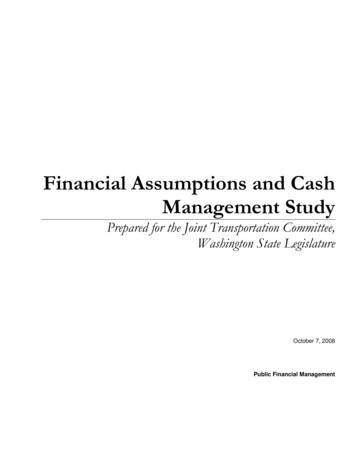Assumptions And Justifications Can
Assumptions and JustificationsUse page 73 in your book to help complete the notes below Things You Can Assume From a DiagramThings You CAN’T Assume From a DiagramI. For each picture list the facts you can assume from it.CATMLWPNH1UQR1XUYLM23NII. Based on the picture alone, determine if each statement is true or false. 1. ET SR5. MO OEM2. MES is a right angle.6. OET TESO3. T is between E and H.7. O and R are collinear.4. M, O, S, and H are coplanar.88. MTH is a right angle.HTRES1. AEB is an acute angle. 6. BEC and ECB are supplementary.ABECD2. AE BC7. AEB and BEC are complementary.3. AB BC8. C is the midpoint of BD .4. AB AE9. BCE and ECD are a linear pair.5. m ECB 90 10. ABE and EBC are complementary.
III. For each statement and its next logical conclusion, tell which definition, postulate, or theorem gives the justification.1. Given: AM WUConclusion: AM WU11. Given:Why:Conclusion: U is the midpoint of RN2. Given: E is the midpoint of BDConclusion: BE EDWhy:Why:3. Given: A bisects CTConclusion: CA ATRN8912. Given:Conclusion: 8 and 9 are verticalWhy:Why:4. Given: CO OLConclusion: CO OL13. Given: m NAT m WED 90 Conclusion: NAT & WED are complementaryWhy:Why:5. Given: DAY and YAK are a linear pair.Conclusion: DAY & YAK are supplementary14. Given: FA RMConclusion: FA RMWhy:Why:6. Given: TOM is the supplement of SUEConclusion: m TOM m SUE 180 Why:7. Given: A and B lie in Plane JOGConclusion: A and B are collinearWhy:15. Given: MA THConclusion: MA THWhy:16. Given: m AFD m BAT 180 Conclusion: AFD & BAT are supplementaryWhy:F8. Given: A is in the interior of GLDConclusion: m GLA m ALD m GLDROGWhy:17. Given:9. Given: 1 is the complement to 3Conclusion: m 1 m 3 90 Conclusion: FRO ORGWhy:10. Given: HAM is vertical to EATConclusion: HAM EATWhy:Why:18. Given: m 2 m 6Conclusion: 2 6Why:
Name:Period:Making Conclusions1. Given: TO ANMConclusion:I8. Given:K75EJustification:Conclusion:2. Given: E is the midpoint of BDJustification:Conclusion:9. Given: EJustification:FGConclusion:3. Given: A bisects CTJustification:Conclusion:Justification:F4. Given: CO OLEConclusion:Justification:Justification:5. Given: DAY and YAK are a linear pairConclusion:Justification:6. Given: TOM is the supplement of ion:12. Given: CAT and RAP are vertical angles.Conclusion:Justification:Given:11. Given: m ABC m HIJConclusion:Justification:7.G10. Given:Conclusion:MD6 5US13. Given: SAT ACTConclusion:Justification:14. Given: A is in the interior of GLDConclusion:Justification:
15. Given: FA RM89Conclusion:21. Given:Justification:Conclusion:16. Given: HAM is vertical to EATJustification:Conclusion:MJustification:ILK22. Given:RUN17. ation:23. Given: PAI and IAR are a linear pair8918. Given;Conclusion:Justification:19. Given: m NAT m WED 90 Conclusion:Justification: Conclusion:Justification:24. Given: CAT and RAP are complementaryangles.Conclusion:Justification:25. Given: m NAT m WED 180 Conclusion:20. Given: UB bisects RUYJustification:Conclusion:Justification:26. Given: A is between J and MConclusion:Justification:“Making Conclusions” Worksheet continues on the next page
For #27 and 28, a two column proof is given but steps are missing. Fill in the missing steps andrewrite the whole proof correctly.27.13 42Given: 1 is supplementary to 2, 3 is supplementaryto 4, and 2 4Prove: 1 3StatementsReasons1. 1 & 2 are supp. 3 & 4 are supp.Given2.m 1 m 2 180 m 3 m 4 180 Def. of Supplement.3.m 1 m 2 m 3 m 4Transitive Prop.6.m 1 m 4 m 3 m 4Substitution prop,Steps and7.m 1 m 3Subtraction prop.8. 1 3Def. of 4.5.MK75 EIGiven: 5 is complementary to 728.Prove: MI IEStatementsReasons1. 5 & 7 are comp.Given2.m 5 m 7 90 Def. of complement.4.m MIE 90 Substitution, steps and6.MI IEDefinition of perpendicular3.
P 113 (4, 7, 8)
Name:Period:Proofs Worksheet #1On a separate paper, write a two-column proof for each problem 1-5. Follow the plan provided for help.1. Given: RT SUProve: RS TURSTUPlan: Use the definition of congruent segments to write the given information in terms of lengths. Nextuse the Segment Addition Postulate to write RT in terms of RS ST and SU as ST TU. Substitutethose into the given information and use the Subtraction Property of Equality to eliminate ST and leaveRS TU.2. Given: m 5 47 Prove: m 6 133 TM6 5USPlan: Use the Linear Pair Theorem to show that 5 and 6 are supplementary. Then use thedefinition of supplementary angles to show that their measures add up to 180 . Finally use substitutionand then subtraction to arrive at the “Prove” statement.3. Given: AB BCBC BDProve: B is the midpoint of ADADBCPlan: Write the “Given” information and use the transitive property to show that AB BD. Then usethe definition of congruence to show that the segments are congruent and the definition of midpoint tofinish the proof.4. Given: l bisects MN at PProve: MP PNMPNlPlan: Use the definition of bisect to show the two smaller segments are congruent. Then use thedefinition of congruence to show that their lengths are equal.5. Given: 1 and 2 are supplementary; 1 3Prove: 3 and 2 are supplementary123Plan: Use the definition of supplementary angles and congruent angles to write the given informationin terms of angle measures. Next use substitution to show that m 3 m 2 180 . Then use thedefinition of supplementary angles for the conclusion.
Proofs Worksheet #2WN1.MOGiven: O is the midpoint of MNOM OWProve: OW ONW1 2U3.XOXQRLMNBCC12D3FED1 2Given: 1 2Prove: 1 and 2 are right anglesW1 2UYGiven: m 1 90 Prove: m 2 90 1808.Given: AB CDProve: AC BD11.BA6.J KL1 23 MPADCEGiven: 1 and 2 are complementary 3 and 2 are complementaryProve: m 1 m 3Given: PR LNQ is the midpoint of PRM is the midpoint of LNProve: PQ LM9.BYGiven: m 1 m 3Prove: m JOL m KOM7.AGiven: AB CDProve: AC BD4.Given: m 1 90 Prove: m 2 90 5.2.DGGiven: EF EGD is in the interior of FEGProve: FED and DEG are complementary10.12Given: 1 and 2 are supplementary 1 2Prove: 1 and 2 are right angles2112.3Given: 1 and 2 are complementaryProve: 2 and 3 are complementary
the definition of congruence to show that the segments are congruent and the definition of midpoint to finish the proof. 4. Given: l bisects MN at P Prove: MP PN Plan: Use the definition of bisect to show the two smaller segments are congruent. Then use the definition of congruence to show that their lengths are equal. 5.
BarLay Opinion TestimonyRegarding Justifications for Realcomp's Rules and Policies ("Motion on Justifications"). By Order dated May 22,2007, the parties'Joint Motion for an Extension to Answer Complaint Counsel'sMotions In Limine was granted. Respondent filed its oppositions on May 31, 2007.
2 Capital Market Assumptions What are they? – Aon Hewitt's asset class return, volatility and correlation assumptions – Long-term; based on 10-year and 30-year projection periods Forward looking assumptions Best esti
Financial Assumptions and Cash Management Study 5 2. Financial Plan Bond Financing Assumptions This section evaluates the major bond financing assumptions used in the 16-Year Transportation Financial Plan by both OFM/WSDOT’s and the Legislature’s budget models, with a focus on the int
Design Assumptions to predefine all the design assumptions related to the design code selected in the localization settings Bar Stock to define the library of available or preferred bars to reinforce the elements Reinforcement Assumptions to access and define all the reinforcement assumptions for three categories of RC
Examining some assumptions and limitations of research on the effects of emerging technologies for teaching and learning in higher education Adrian Kirkwood and Linda Price, Institute of Educational Technology, The Open University, UK Abstract This article examines assumptions and b
DB2 Version 9.5 for Linux, UNIX, and Windows SC23-7724-00. XML Extender Administration and Programming DB2 Version 9.5 for . DB2 and XML Extender code page assumptions 286 Assumptions for importing an XML document 286 Assumptions for exporting an XML . latest version of this guide at the XML Extender
Word learning is an inductive feat (Quine, 1960). One well-known prob- . by children to narrow their hypotheses about word meanings: the i hole object, taxonomic, and the mutual exclusivity assumptions. THE TAXONOMIC AND WHOLE OBJECT ASSUMPTIONS When an adult points to an object and labels it, the novel term could .
INTRODUCTION The Discipline and Practice of Qualitative Research Norman K. Denzin and Yvonna S. Lincoln T he global community of qualitative researchers is mid-way between two extremes, searching for a new middle, moving in several different directions at the same time.1 Mixed methodologies and calls for scientifically based research, on the one side, renewed calls for social justice inquiry .























